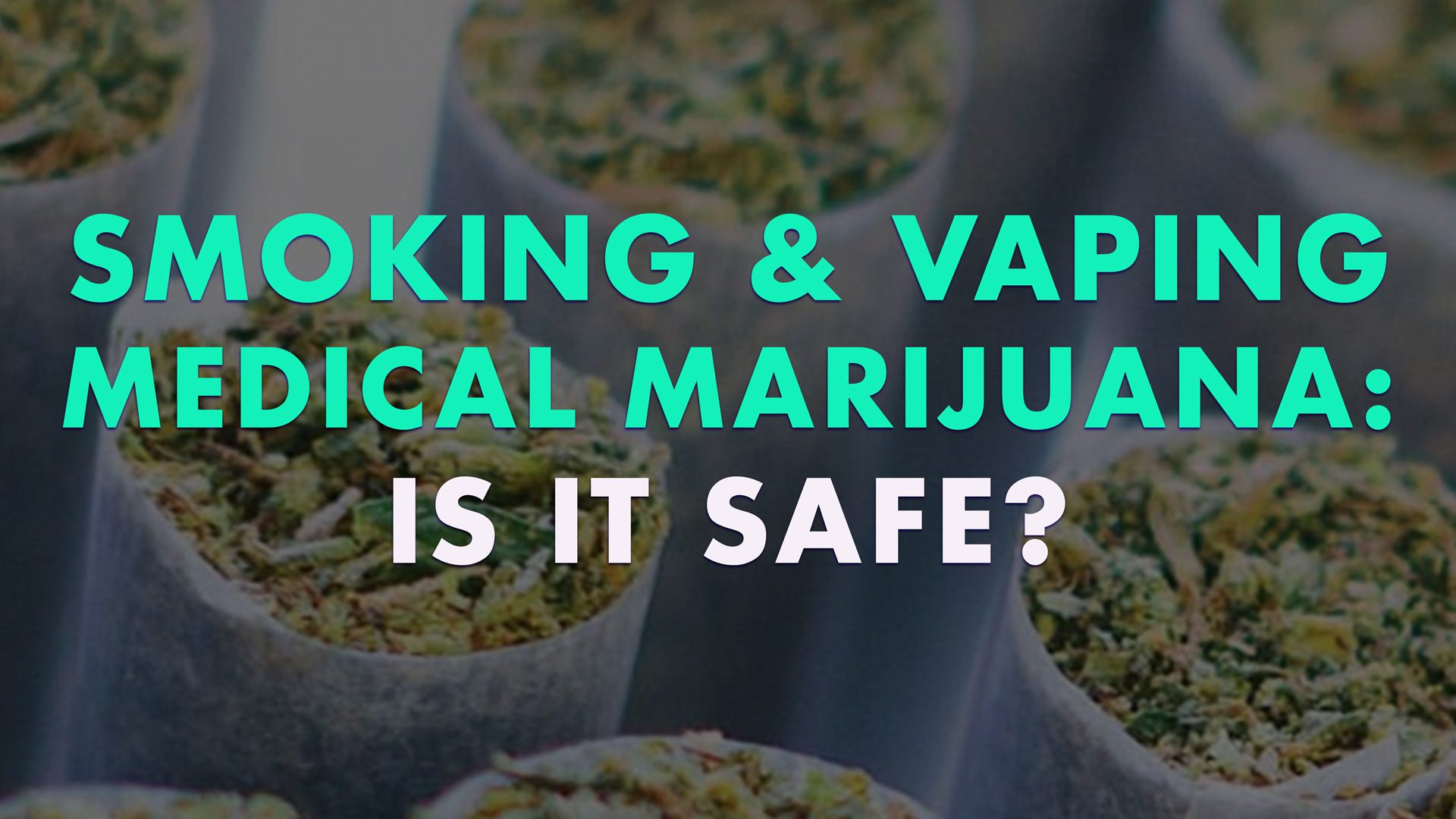
Smoking and Vaping Medical Marijuana: Is it Safe?
Many cannabis users are already familiar with smoking marijuana bud or flower. This tends to be the most common method of administration, and has been for centuries. As more and more medical dispensaries continue to open, patients with a medical marijuana card will find they have access to a wide variety of cannabis options. These include vaping medical marijuana from disposable vape pens, other vaporizer products, creams, salves, tincture, elixirs, mints and other products.
Until these additional methods are widely available, the most common way to use medical marijuana is by smoking or vaping. This brings up the frequently asked question – which is safer, smoking or vaping medicinal marijuana?
Vaping Medical Marijuana & Smoking Medical Cannabis
The primary difference between smoking and vaping is that vaping creates a cannabinoid-rich vapor by heating the cannabis, which you then inhale. Smoking ignites the cannabis by burning the flower, which introduces a greater number of harmful chemicals and irritants into your lungs.
Vaping medical marijuana overall tends to provide a cleaner, more subtle taste that is sometimes barely noticeable (depending on how it’s prepared). It’s also much more discreet than smoking and won’t cause a lingering odor on clothing or furniture.
Unfortunately, state law does not protect public cannabis use even if patients have their Missouri marijuana card, but it does state that landlords cannot restrict marijuana use if a patient is vaporizing on his private property. It offers no such protection for other methods (such as making edibles or smoking flower) so it is important to be careful if/when ingesting using those methods.
Cancer and Popcorn Lung From Cannabis Use

We often recommend vaping over smoking to our patients, especially to new cannabis users. Patients commonly express concern over irritating their lungs or getting popcorn lung. Popcorn lung is caused by a specific chemical.
What Chemical Causes Popcorn Lung?
The chemical with a link to popcorn lung is called Diacetyl. Fortunately for medical marijuana patients, none of the vape products in Maryland contain this chemical.
Does Cannabis Cause Cancer?
A recent meta-analysis shows that there is no increased risk of cancers associated with cannabis use. Smoking cannabis does increase bronchitis, chronic coughing, and phlegm production with long term use. While all this information seems to suggest vaping is safer than smoking, there are still safety concerns to be aware of.
Not All Cannabis Vape Pens are Created Equal
Vape oils should contain minimal pesticides and shouldn’t use cannabinoid solvents like Propylene Glycol and Polyethylene Glycol. There’s also a new trend of using essential oils, which have not been properly studied and may not be safe when heated and inhaled.
Maryland products are tracked from seed to sale and are supposed to meet state guidelines. Missouri products should have a similar tracking system. It doesn’t hurt to check what’s in a vape oil, though. Ideally, the solvent used would be quality cannabis terpenes and/or vegetable glycerin. For most people, the benefits of vaping cannabis far outweigh the small risks of using other solvents. But it’s good to be informed!
If vaporizing becomes a patient’s preferred method of cannabis administration, they might want to consider investing in a high quality reusable vaporizer. Make sure to do research and purchase one with proper temperature controls and quality materials.
There are many vape pens on the market made from sub-par materials, so sometimes the cost is worth it for safety. Cheaper pens, especially those made in China, may contain heavy metals or toxic chemicals that are released when used due to poor regulation. Look for pens made from high-grade titanium and avoid those made with Teflon.
Vaping Medical Marijuana Didn’t Work for You?
Some of our patients say that they’ve already tried vaping cannabis, but didn’t think it worked and was ultimately a waste. Vaping is not for everyone but sometimes the device or the temperature used can significantly alter the effectiveness.
Electronic cigarette vaporizers or poorly calibrated pens can operate at higher or lower than ideal temperatures for cannabis. Temperatures at around 338°F are most effective for vaporizing and delivering cannabinoids, terpenes, and other beneficial chemicals.
There are also big differences between vaping cannabis oils and the plant matter/flower itself. When using the flower, vaporizers quickly lose their convenience factor. Cannabis must be finely ground and loaded up in order to be fully vaporized. Then the device must be properly cleaned after use.
Some people find that vaping cannabis oils provides a more consistent flavor. While some users claim that vaping cannabinoids has a shorter duration of action or that cannabinoids are lost in side steam, there have not been enough studies to confirm these claims.
Best Way to Consume Cannabis?
For some patients, smoking will always be their method of choice. And that may be perfectly fine for a patient, especially if it isn’t done excessively. Some individuals may only wish to use cannabis before bed to help relieve chronic pains or other symptoms so that they can sleep. Other patients seek all day relief.
Smoking and vaping aren’t the only options out there, either. Tinctures, topicals, patches and home-made edibles are other great ways to use cannabis, depending on the medical condition and the time of day. We strongly encourage patients to try all possible methods to settle on what works best for them.
Green Health Has Answers!
The support team at Green Health Docs can provide guidance on the best strains for your conditions and on how to make your own edibles at home! We broadcast our educational sessions so be sure to follow us on YouTube and Facebook. For more information or to learn how to become a legal medical marijuana patient, call or text us at 1-877-242-0362.

